
Time:2025-08-13
Sapphire lenses are an important component of optical components, and their processing accuracy directly affects the performance of optical instruments. Among them, the drilling process is a key link in sapphire lens processing, and precision control is of utmost importance. The micro hole size error often needs to be controlled at the micrometer level, which puts high demands on the processing technology.
Sapphire, as a high hardness material, mainly uses laser processing technology to achieve precise drilling of sapphire lenses. Laser drilling technology has the characteristics of non-contact, small heat affected zone, and high precision, making it particularly suitable for processing hard and brittle materials such as sapphire. In practical production, ultraviolet laser and picosecond laser are two commonly used processing light sources. Due to its short wavelength, ultraviolet laser can achieve a smaller focused spot and is suitable for processing micropores with diameters below 100 microns; And picosecond laser, with its ultra short pulse characteristics, can effectively reduce the heat affected zone and improve the quality of the hole wall.
The control of drilling accuracy involves systematic optimization of multiple key parameters. Firstly, the selection of laser power. Excessive power can cause the material to vaporize excessively, forming irregular holes; If the power is too low, it may not be able to effectively penetrate the material. Secondly, the setting of pulse frequency is crucial. If the frequency is too high, it can lead to heat accumulation and the formation of cracks; If the frequency is too low, it will reduce the processing efficiency. In addition, parameters such as focusing position, auxiliary gas pressure, scanning speed, etc. will have a significant impact on the quality of drilling. In actual production, it is usually necessary to determine parameter combinations through extensive process experiments based on specific sapphire materials and hole requirements.

The application of real-time monitoring system improves the reliability of precision control during the drilling process. The high-precision CCD vision system can capture the processing status in real time, and adjust the processing parameters in a timely manner with the closed-loop control system. This real-time feedback mechanism can effectively compensate for the accuracy deviation caused by material unevenness or equipment fluctuations.
The quality inspection after drilling is also an important part of precision control. Modern inspection technology uses equipment such as white light interferometers or laser confocal microscopes to obtain three-dimensional parameters such as hole depth, taper, roundness, etc., providing data support for precision control. Especially for highly demanding irregular or array hole structures, automated optical inspection systems can achieve rapid full inspection, ensuring that each hole meets design requirements.
The influence of environmental factors on drilling accuracy cannot be ignored. Temperature fluctuations can cause changes in the focal length of optical systems, while humidity changes can affect laser transmission efficiency. Therefore, high-precision machining usually requires a clean environment with constant temperature and humidity. At the same time, the isolation treatment of the equipment is also important, as even small vibrations may cause laser focus shift and affect drilling accuracy. Some processing equipment will be equipped with active vibration isolation systems to effectively isolate the impact of ground vibrations on the processing process.
Fixture design is another key factor in ensuring drilling accuracy. Due to the thinness and fragility of sapphire lenses, the fixture needs to be able to firmly fix the workpiece without applying excessive pressure that could cause it to break. Vacuum adsorption fixtures are an ideal choice as they can evenly distribute the fixing force and facilitate quick replacement of workpieces. For lenses with special shapes, customized fixtures may be required to ensure positioning accuracy. In addition, the repeated positioning accuracy of the fixture directly affects the consistency during mass production, and it is usually required to reach the micrometer level.
The influence of material properties on drilling processes is also worth paying attention to. Sapphire crystals with different growth directions exhibit anisotropy, which can lead to inconsistent material removal rates during laser processing. C-side sapphires are usually the easiest to process, while A-side or R-side sapphires may require adjusting processing parameters. In addition, the type and concentration of doping elements can also affect the interaction mechanism between laser and materials. Experienced process engineers will customize personalized processing plans based on specific material characteristics to ensure the drilling effect.
The precision control of sapphire lens drilling is a complex interdisciplinary system engineering that involves professional knowledge in multiple fields such as optics, materials, mechanics, and control. To achieve stable and efficient precision machining, it is necessary to comprehensively consider various factors such as equipment performance, process parameters, environmental conditions, and material characteristics. The continuous progress in this field not only reflects the precision limit of modern manufacturing technology, but also demonstrates humanity's unremitting pursuit of craftsmanship.
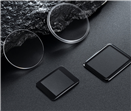
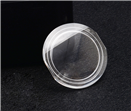
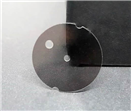
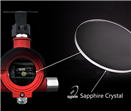
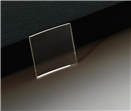
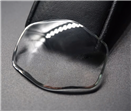
Tel
Mobile phone
Customer service
TOP